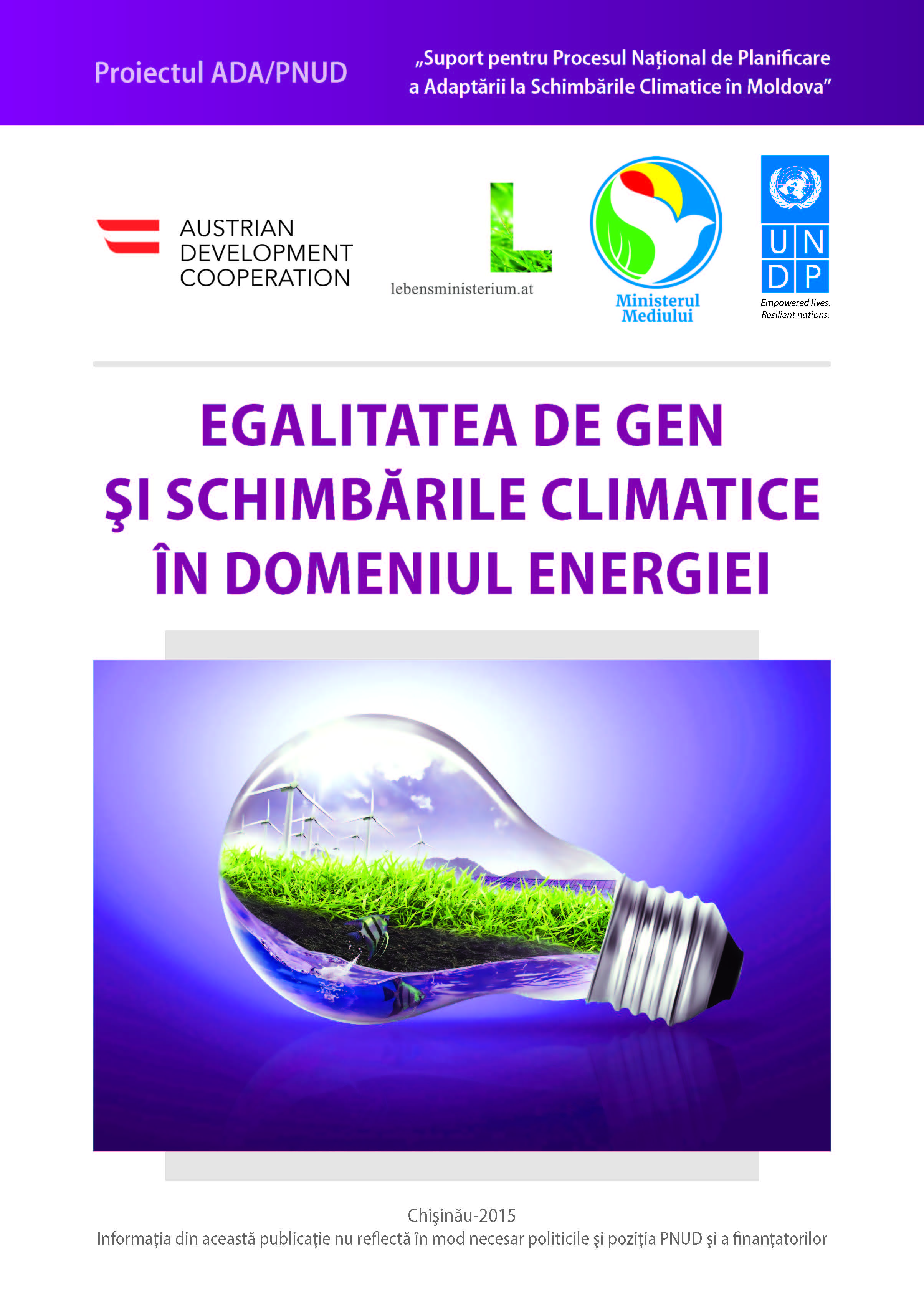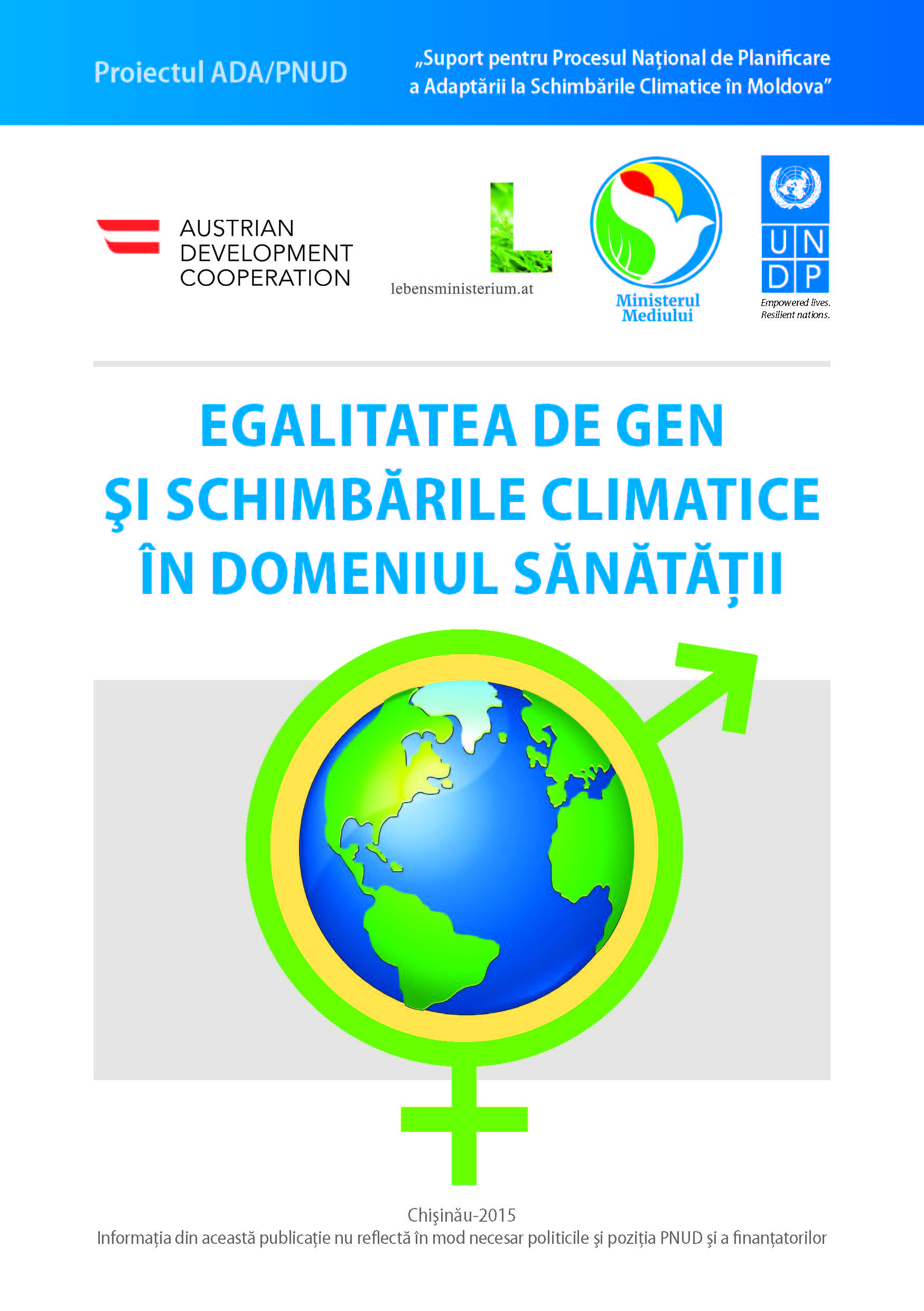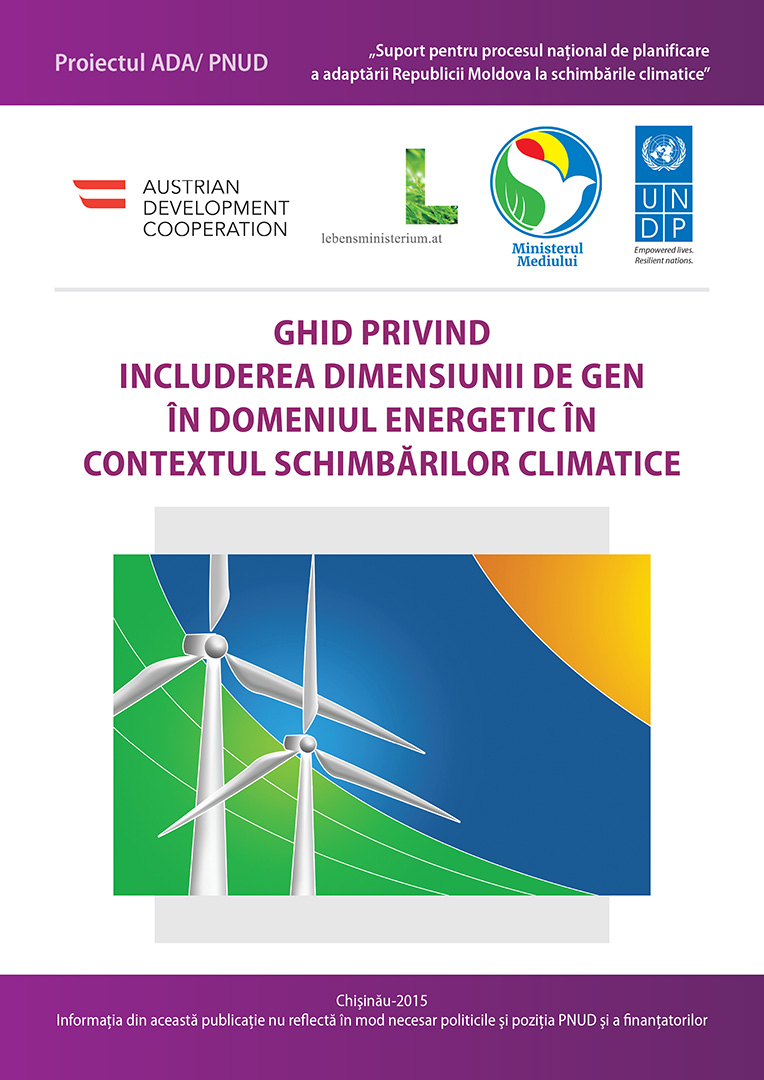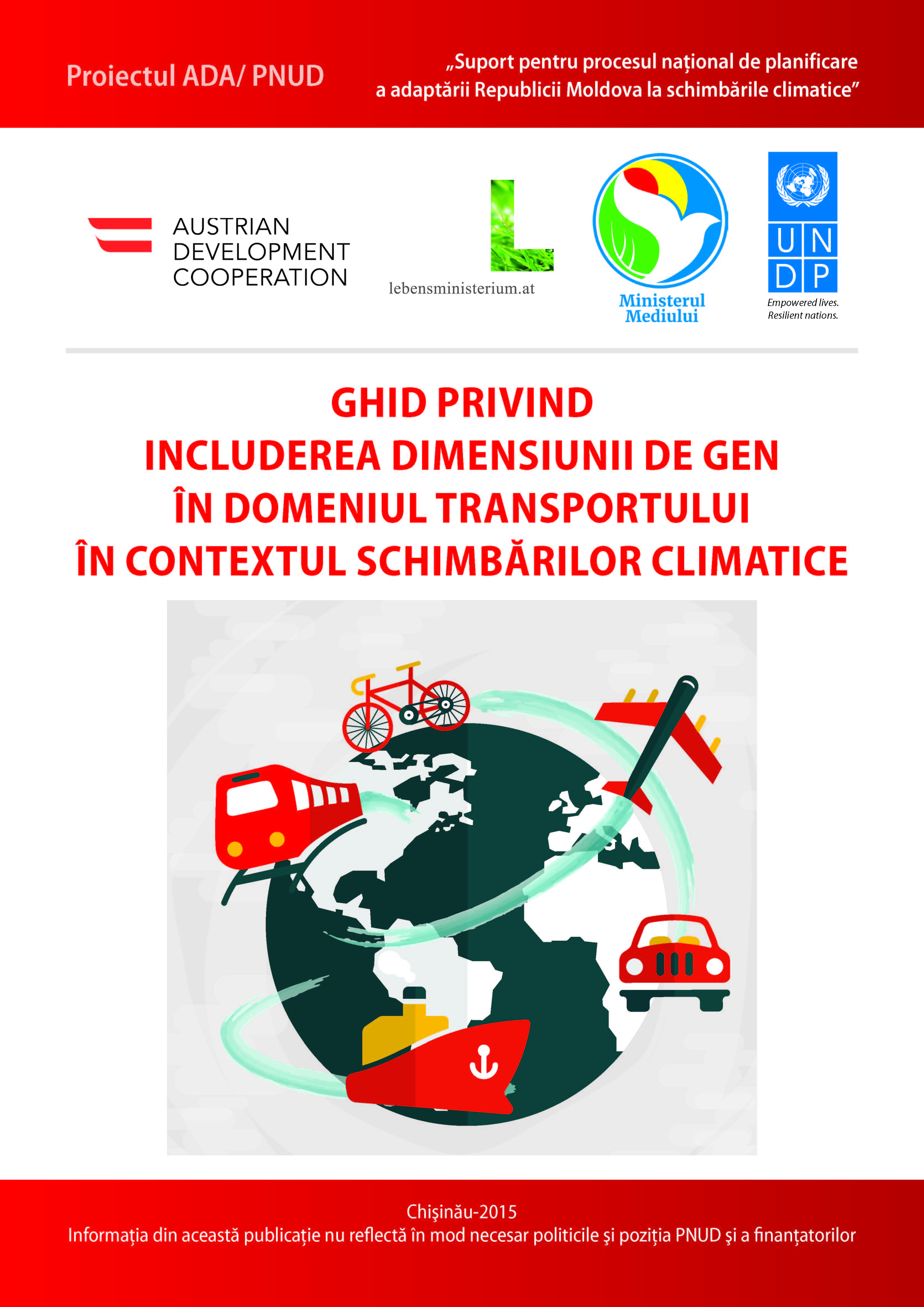INTRODUCTION TO GENDER AND CLIMATE CHANGE
Conceptual delimitations
Gender refers to the social and cultural roles and responsibilities of women and men in any society. The roles are taught and may be amended in concrete contexts. Sex refers to the biological differences of men and women that are predetermined.
Mainstreaming gender equality is the process of identifying and mainstreaming the needs and interests of women and men in each program, policy, strategy, administrative or financial activities related to the climate change.
Gender analysis of climate change actions integrating the two areas (gender and climate change), explains how climate change impacts and gender inequality are mutually interdependent. The analysis of different situations, directly or additionally linked to climate change, of men and women can provide an understanding of the impact of various legislative, cultural practices, policies and programs on women and men and their relevant adjustment.
Gender Impact Assessment (GIA) is a type of gender analysis, which is used primarily to public policy analysis. Gender impact assessment can be performed:
- Ex-ante: To assess the potential effects of proposed changes of the policy document. This evaluation is performed during the stages of development of a policy or law (for e.g., prior to implementation).
- Ex-post: To assess the actual effects of a policy or a law in force. This evaluation is performed either during the implementation of a policy, to monitor its effects on men and women, or after the implementation of a policy or law, to evaluate its effects on men and women.

What do we assess?
Participation: the level of involvement of men and women in actions?
Resources: fair access to resources for m / w (time, money, information, services, etc.)?
Rules, values, behaviors: what's the influence of gender stereotypes, socio-cultural rules of m / w to implement the policy? Effects? Accordingly, what's the impact of the m / w (elimination or reproduction of stereotypes)?
Rights: the opportunities for m / w rights' realization? Effects? Etc.
Gender stereotypes - beliefs, ideas, faith which, by limiting the traditional roles of women and men reinforce the simplistic, distorted image of men and women, and can lead to discrimination based on gender. Stereotypes reflect their decisions, values and behaviors in terms of adaptation to climate change.
Gender equality dimension in development: taking into account the specific influences on the lives and wellbeing of men and women regarding the political, social, economic, cultural, environmental factors, etc.
The gender approach to development requires the introduction of gender dimension in all relevant areas; taking into account the gender factor in the area analysis and the development of concerned policies.
Vulnerability aspects:
- Physical (individual)
- Social and cultural
- Economic
- Environmental/ ecological
- Social roles / gender stereotypes
- Educational level
- Access to public information (using IT)
- Health (predispositions to diseases / infections)
Family status (mobility, children and other dependents) etc.

The importance of the gender dimension
Women and men have different experiences and perceptions and identify risks differently.
Vulnerability and risks reduction capacities are determined by several factors: poverty, social class, age, ethnicity and gender relations etc.
The impact of climate change targets natural risk factors combined with human vulnerability.
These vulnerabilities take the shape of physical exposure, socio-economic vulnerability, and limited capacity to reduce vulnerability / climate change risk and to respond to them.
Climate change could intensify gender inequality, and a disaster may worsen the situation of women even more. The level of risk is different for women than for men; including different resilience capacities, which result in gender differences and inequality.
Current gender relations between male and female regarding disaster risk reduction are determined by the roles and responsibilities of women and men at home and in society. These roles incorporate different responsibilities, attitudes and social expectations.
Since climate change have a greater impact on marginalized groups, women and girls are most sensitive to it, recording higher rates of morbidity, mortality and economic impact / low capacity for resistance to risks.
For example, in case of natural hazards, women are at greater risk of injury or death due to physical conditions.
In case of chemical / anthropogenic hazards, using POP can have adverse consequences on woman's reproductive health.
In case of biological / social hazards, it must be taken into account, that the water from wells is used in higher proportions, by women, so that risk for exposure is higher.
In general, the entire population may be at risk, but women and men have different levels of vulnerability and access to resources and therefore have developed different adaptive skills.
Meanwhile, gender specifics target men as a group, namely they often tend to underestimate the risk, which should be taken into account in training programs and assistance services.
Ignoring the gender dimension can lead to incomplete assessment of the situation and underestimating the risks. Or risk identification and assessment, focusing on specific gender interventions, can contribute to more efficient and cost-effective risk mitigation for climate change.
The efficiency of risk mitigation and actions of prevention, preparedness and response to climate disasters can be strengthened by taking into account the different level of vulnerability of different social and gender groups. Therefore, the inclusion of the gender dimension in policy documents, in the implementation of adaptation activities, financial allocations, monitoring and evaluation process of CC is a significant precondition for effective adaptation to climate change.
The material was prepared using some references indicated below.
Bibliographical references:
- Gender mainstreaming in emergency management: opportunities for building community resilience in Canada // PHAC, Government of Canada, 2008
- Gender perspectives: integrating disaster risk reduction into climate change adaptation // UNISDR, 2008
- Gender sensitive disaster management: a toolkit for practitioners // Earthworm Books, 2008
- Gender Mainstreaming in Practice: A Toolkit. UNDP RBEC, 2007
- Stories from the Pacific: the gendered dimensions of disaster risk management and adaptation to climate change // AusAid, Government of Australia; UNDP, 2009
- Training manual on gender and climate change // Global Gender and Climate Alliance; IUCN; UNDP, 2008
Valentina Bodrug-Lungu,
National Consultant on Gender dimension








